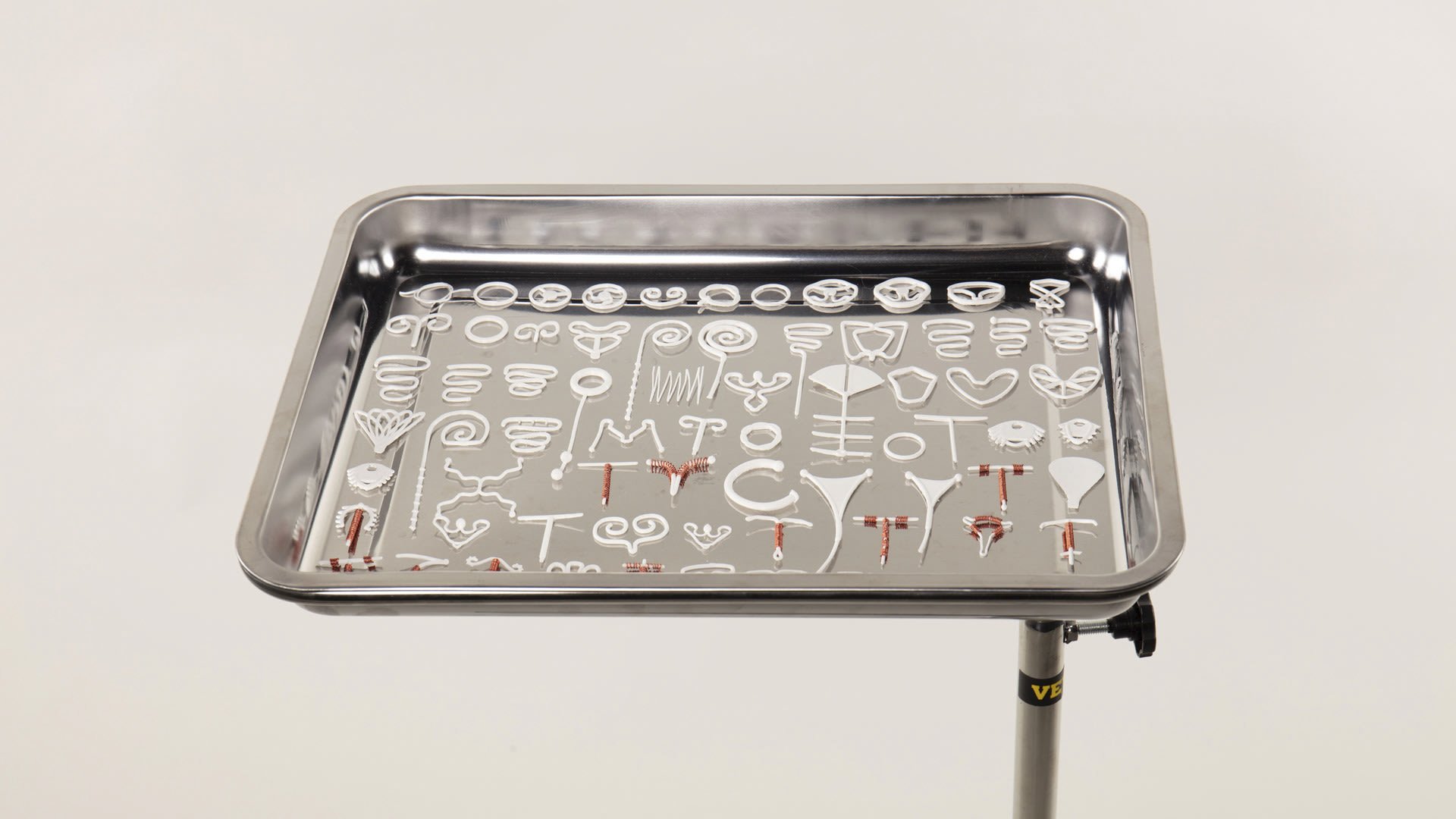
Key details
Date
- 8 March 2023
Author
- RCA
Read time
- 3 minutes
The road to gender equality begins with recognising that we don’t all start from the same place. ‘Embracing Equity’, the theme of International Women’s Day 2023, is an acknowledgement of this and a call to action for us all to create a world in which gender equality is possible.
We asked five of our students how design can forge an equal world through equity? Each of them are working on projects that recognise the unique circumstances of diverse women across the world.
Key details
Date
- 8 March 2023
Author
- RCA
Read time
- 3 minutes
Marie-Therese Dawes, MA Textiles

Marie-Therese Dawes is inspired by the history of feminism, female artists and the women of her own family. She creates textile art pieces representing all the women who ‘chose to sew/knit/crochet/embroider and those who just as firmly elected not to.’
“Women are not inherently different to men, they just historically haven’t had the time to create the mischief.”
MA Textiles
‘There are a lot of obvious connotations about textiles as a female sphere, so it makes the perfect medium to challenge the status quo’ Marie-Therese told us. Each of her works explores feminist discourse through objects belonging to domestic settings to which women have historically been excluded – and argues for a recognition of the value of these objects as the product of skilled labour.
A glass cloth, for example, is embroidered with a quotation from Myra MacDonald: ‘Women are thought to have natural manual dexterity that makes them good at sewing, but not at surgery.’ Marie-Therese’s MA Textiles work provokes us to consider how our view of women’s labour is maligned by historical circumstances, and how the realisation of this inequity helps us move towards equality. As Marie-Therese says, ‘to design is to challenge, and so it is within its nature to be a force for change.’
Molly Hughes, MA Architecture

“Architecture’s ability to synthesise societal beliefs into spatial typologies is a subject area I find particularly interesting.”
MA Architecture
How does our built environment perpetuate gender inequality? Molly Hughes’ research investigates how notions of purity and sanitation regulate women's’ bodies in public and private spaces. Her work-in-progress project ‘Taboo in the Loo’ explores the formation of taboos surrounding periods, and especially the bathroom as a regulatory space.
'Architecture’s ability to synthesise societal beliefs into spatial typologies is a subject area I find particularly interesting’ Molly told us. She intends to develop her work for our MA Architecture as a study of London’s Victorian ‘conveniences’, a network of spaces still present in the city. The project’s overall aim is to promote both a literacy around the body that positively impacts women's health and the provision of sanitary spaces to ‘accommodate all bodies and needs.’
Xenia Lembono, MA Fashion

Xenia Sabina Lembono is an interdisciplinary designer working across fashion and architecture with a deep interest in sustainability, not only in the context of environment but of people and culture. With roots in Indonesia, Xenia is applying zero-waste practices to conserve the cultural heritage and practice of traditional crafts.
‘Fashion plays a big part in driving gender equity because it is an industry with women as the majority of makers and consumers of clothing…keeping traditional techniques means textile and garment artisans who are mostly women can keep on making crafts.’
Driven by curiosity and a desire to solve challenges in fashion like overproduction and overconsumption, Xenia is developing innovations as part of her study for our MA Fashion that preserve heritage while promoting sustainable design.
Dailya Team, MA/MSc Innovation Design Engineering
“An accessible and effective thermo-therapy solution for menstrual pain.”
Dailya are ‘on a mission to stop women from feeling restricted by menstrual pain.’ The MA/MSc Innovation Design Engineering team introduced their device as a simple solution to a problem that has a huge impact on women’s lives.
Starting with the observation that the humble hot water bottle remains the most popular choice for women seeking to relieve period pain, the team designed underwear with embedded heating that targets pain zones in the abdomen and lower back area. Their device uses phase change materials to relax the uterine muscle contractions that cause period cramps.
The team, made up of Muna Daud, Valeria Martinelli and Sachin Mehra, based their project on extensive interviews with women concerning their needs for menstrual care. ‘Our focus on simplicity, discreetness, effortlessness, and inclusivity is aimed at improving the quality of life for all women and promoting gender equality in all aspects of life.’
Joo Yeoun Yoo, MA Visual Communication
Seeing the impact of gender inequity in everyday objects and practices is central to Joo Yeoun’s work. In her project ‘Letter from the past – Binyeo’ for our MA Visual Communication, she explores how women in Joseon Dynasty Korea experienced patriarchal norms in the daily practice of tying their hair.
‘Binyeo is a hair ornament that could be used by married women or adult women in Joseon Dynasty Korea’ she explains. ‘ It is an accessory of the Confucian culture of a woman continuing to grow her hair, thinking that damage to her body by cutting her hair is an insult to her parents.’
Joo Yeoun’s project sees a woman taking out her Binyeo to sharpen it for use as an implement for drawing. We then see her drawing illustrations that explore feelings of entrapment and desire for expression. As Joo Yeoun explains, ‘we can open another window of communication in society with an image that contains a simple but powerful message.’
“We can open another window of communication in society with an image that contains a simple but powerful message.”
MA Visual Communication